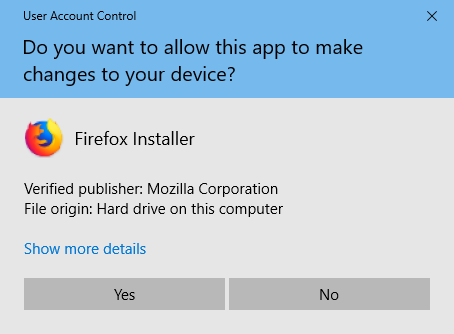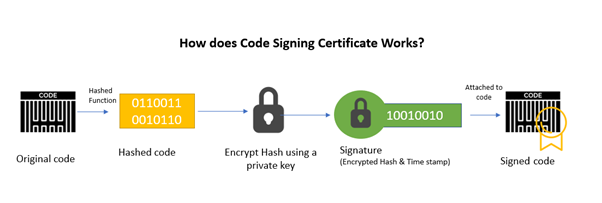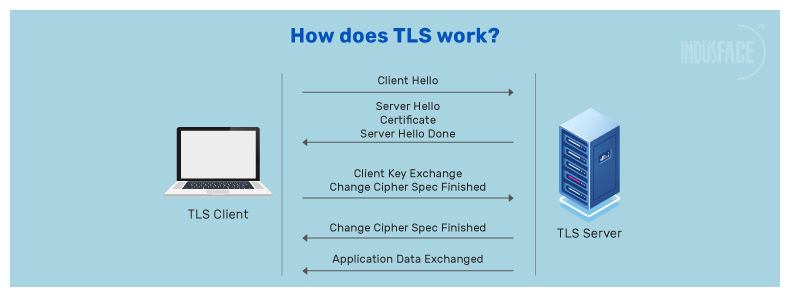
With the increasing number of cyber attacks, both corporate and customers’ data security remains the top priority for almost all businesses today. One finest way to boost cybersecurity is by using digital certificates. Organizations are relying on digital certificates and cryptographic keys to keep communications private and secure, solve any internet security issues and accurately identify browsers and servers for reliable communication.
When it comes to securing web presence, most people are confused between SSL certificates and Code signing certificates and asking, are they interchangeable? The answer is, NO.
Though they both use public-key encryption, there is some difference between code signing and SSL/TLS certificates. The basic difference is code signing certificates are dedicated to preserve software code integrity and SSL certificate ensures website security. Let us delve deep into the code signing certificates Vs TLS/SSL certificates, here.
What Is a Code Signing Certificate?
Also known as a software signing certificate, it is a digital certificate, which assures the legitimacy of software, code, application, and executables. Code signing certificate signs the code based on public key infrastructure to guarantee that it does not get corrupted or modified on its way from the publishing company to the end-user. This certificate is primarily useful for companies who distribute their application or software download through 3rd party sites. It serves as evidence that the software has not been altered since download from the internet.
When a user downloads a software from the internet, web browsers will show an “Unknown Publisher” warning message or a warning message declaring the possible dangers of downloading the file. With a code signing certificate, you can remove the “Unknown Publisher” security warning message as it displays your organization name (i.e. publisher name).

Code signing certificate fulfills two key objectives:
- Validation – it shows proof that the code has been developed by a verified legitimate publisher.
- Code Integrity – Code signing certificate does not allow any 3rd party to alter and tamper with the code behind a software or app.
How Does Code Signing Certificate Works?
- First, you have to apply for the code signing certificate with a trusted CA like Entrust.
- CA verifies your identity. The verification process differs based on a company or individual. The CA generates the public and private keys for the software. The public key is designed to authorize the signature and the private key signs the code/ data. After the vetting process, the CA issues the certificate.
- It is the stage where you have to develop a one-way hash using the private key and encryption techniques and incorporate the digital signature to your code as shown below:

It is suggested to add a timestamp to your signature as it tells the system, which reads that signature – the code was signed at the time when the code signing certificate was valid.
Now you can distribute your signed code/software to your potential users. When an end-user downloads the software, your code signature will be displayed.
What is an SSL/TLS Certificate?
SSL/TLS (Secure Socket Layer/Transport Layer Security) certificates encrypt the communication between the server (app server, web server, LDAP server, or mail server) and the client to ensure the transaction is private.

When you browse the internet, it is the reason for HTTPS in the URL instead of HTTP, where the “s” denotes secure. Google shows a warning message when they’re entering an unencrypted site.
How Does TLS Work?

- Whenever a visitor visits a site, the web browser and the server communicate with SSL/TLS handshake process to ensure there is an encrypted secure connection.
- When a browser sends a request to the legitimate server, the server responds with a TLS/SSL certificate and public key to the browser.
- The browser checks the certificate and confirms it is from a Trusted Certificate Authority – like Entrust. Next, it sends the symmetric session key to the server.
- The server decrypts the key with its private key and sends acknowledgment in the encrypted form to start the communication.
- Now the browser and server can start their secure communication that ensures message integrity, privacy, and server security.
Difference Between Code Signing Certificate and SSL Certificate
| SSL/TLS certificate | Code Signing Certificate | |
| 1 | SSL/TLS certificate is for websites | The code Signing certificate is for downloadable scripts, software, and executables |
| 2 | Validation types include Domain Validation (DV), Organization Validation (OV), and Extended Validation (EV) | Validation types include Standard Validation and Extended Validation |
| 3 | Popular certificate authorities are Entrust, Sectigo, Symantec | Popular certificate authorities are Entrust, Sectigo, Symantec |
| 4 | Encrypts the communication between two machines (browser and server) | Doesn’t encrypt the code rather it hashes the scripts and signature of the publisher |
| 5 | If the certificate expires, the site will lose the encryption. The web browser will show, warning message until the certificate is renewed. | If the certificate expires, the system will show the security warning while downloading the software until the certificate is renewed. |
Conclusions
Nowadays, users are aware that unsecured websites or unauthorized software may result in penetration into the system. Hence, secure communication and safe download from the legitimate publisher is in demand. The above comparisons on the difference between code signing certificates and SSL certificates highlight the importance of both certificates in their own way.
If you have any confusion or queries on how to protect your data and software, feel free to reach Indusface support. Assure your end users by providing authentic software and the strongest website security with SSL encryption!
The post Code Signing Certificates Vs TLS/SSL Certificates – What Are the Differences? appeared first on Indusface.
*** This is a Security Bloggers Network syndicated blog from Indusface authored by Vinugayathri Chinnasamy. Read the original post at: https://www.indusface.com/blog/code-signing-certificates-vs-tls-ssl-certificates-what-are-the-differences/
Code Signing Certificates Vs TLS/SSL Certificates – What Are the Differences?


